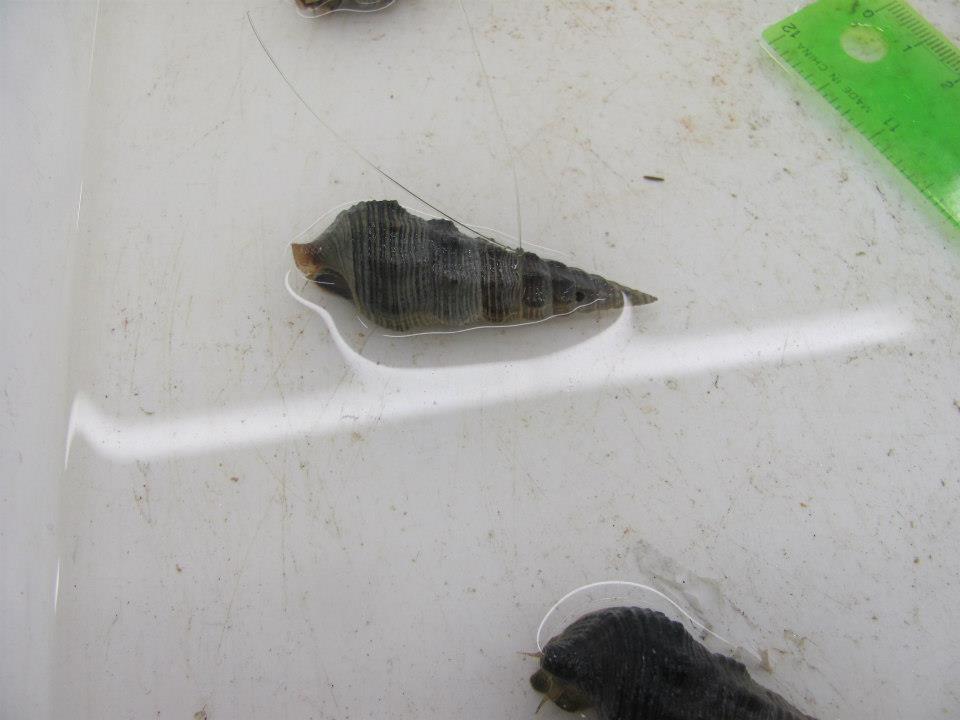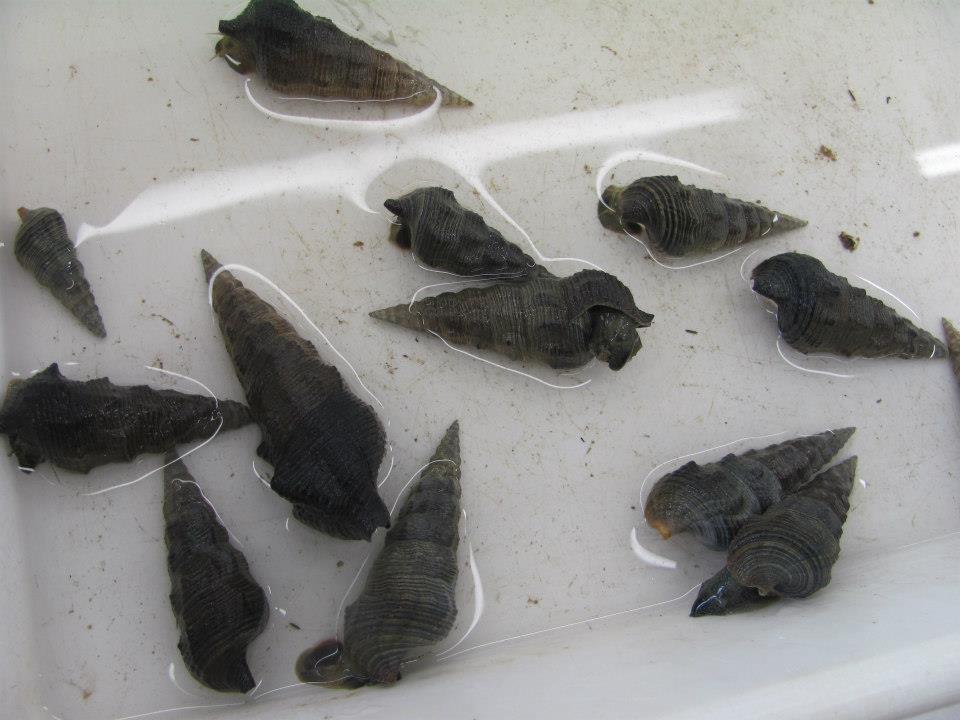Summary
Physical Description
Ecology
Life History & Behaviour
Feeding Behavior
Anatomy & Physiology
Glossary of Gastropod Anatomy
Internal Anatomy
Muscular Foot Strength
Nociceptive Behavior
Evolution & Systematics
Biogeographic Distribution
Conservation & Threats
Human Interaction
Names & Taxonomy
References & Links |
 Pyrazus ebeninus, commonly known as the Hercules Mud Whelk, is a relatively large mud whelk that is typically identified by their spiral sculpture of axial ribs show in spire whorls that grows up to 110 mm (Strong et al. 2011). This species is endemic to Australia and is commonly found on mudflats in intertidal zones or mangrove swamps along the eastern coast (Bishop et al. 2007). It is considered to be one of the most abundant large marine snails in Queensland (QLD Museum, 2013). They often are discovered partially buried in the upper layer of mudflat substrate and easily camouflaged by their range of light to dark brown colored shells. There have been few studies documenting the molecular biology or life history of these organisms, although several studies have been conducted to study their nociceptive capabilities, Euspermatozoa development, and effects on trophic food webs. As few morphological studies have been conducted on this particular gastropod genus, I aim to study the muscular foot strength in comparison to different substrates; including hard, sandy and rocky substrates. 21 specimens were collected on North Stradbroke Island near the high tide mark on an intertidal mudflat to complete this study (Fig. 1). Pyrazus ebeninus, commonly known as the Hercules Mud Whelk, is a relatively large mud whelk that is typically identified by their spiral sculpture of axial ribs show in spire whorls that grows up to 110 mm (Strong et al. 2011). This species is endemic to Australia and is commonly found on mudflats in intertidal zones or mangrove swamps along the eastern coast (Bishop et al. 2007). It is considered to be one of the most abundant large marine snails in Queensland (QLD Museum, 2013). They often are discovered partially buried in the upper layer of mudflat substrate and easily camouflaged by their range of light to dark brown colored shells. There have been few studies documenting the molecular biology or life history of these organisms, although several studies have been conducted to study their nociceptive capabilities, Euspermatozoa development, and effects on trophic food webs. As few morphological studies have been conducted on this particular gastropod genus, I aim to study the muscular foot strength in comparison to different substrates; including hard, sandy and rocky substrates. 21 specimens were collected on North Stradbroke Island near the high tide mark on an intertidal mudflat to complete this study (Fig. 1).
 
Figure 1: A subset of the 18 remaining sample specimens becoming adapted to the hard substrate prior to the fishing line attachment.
|
|